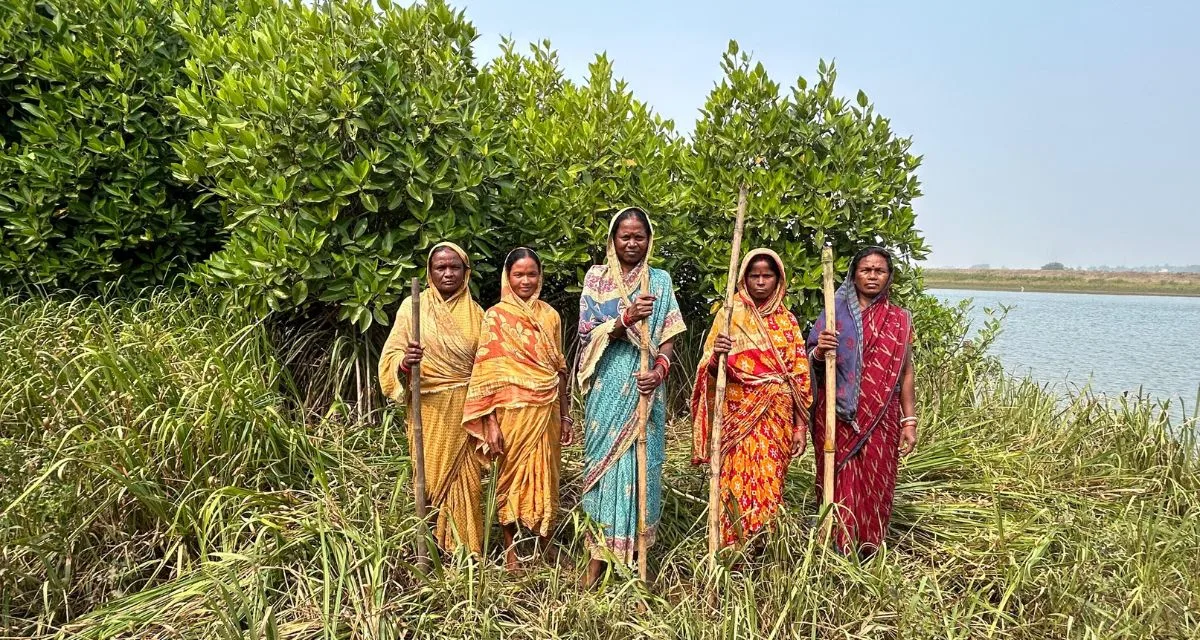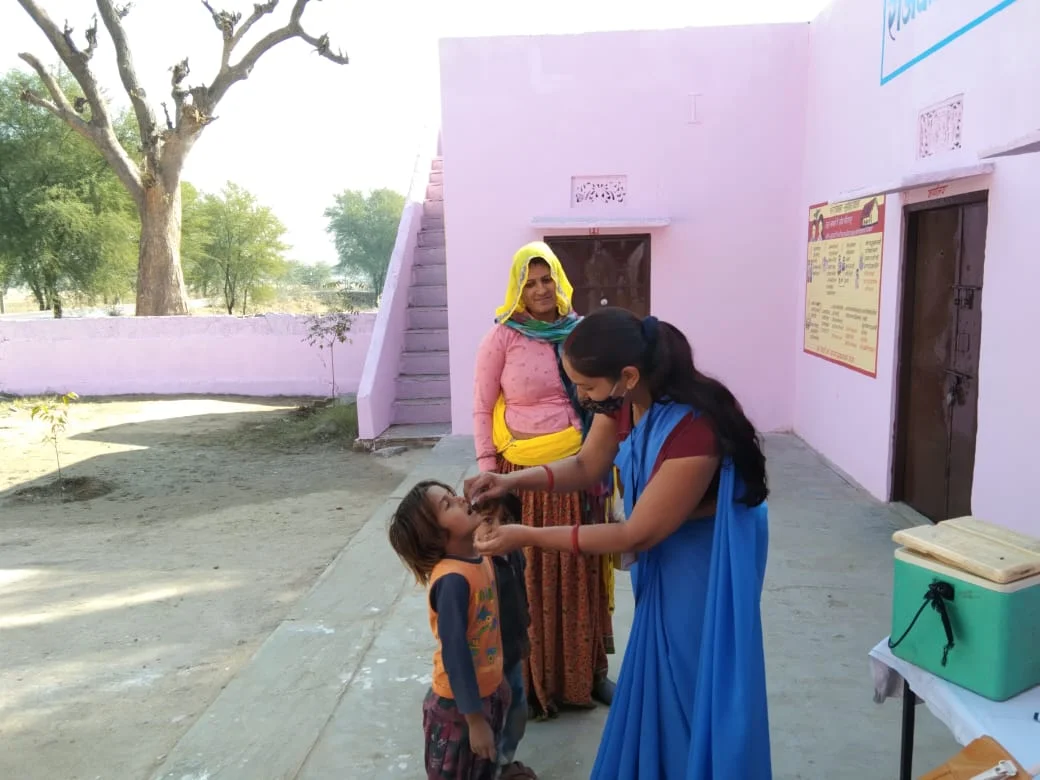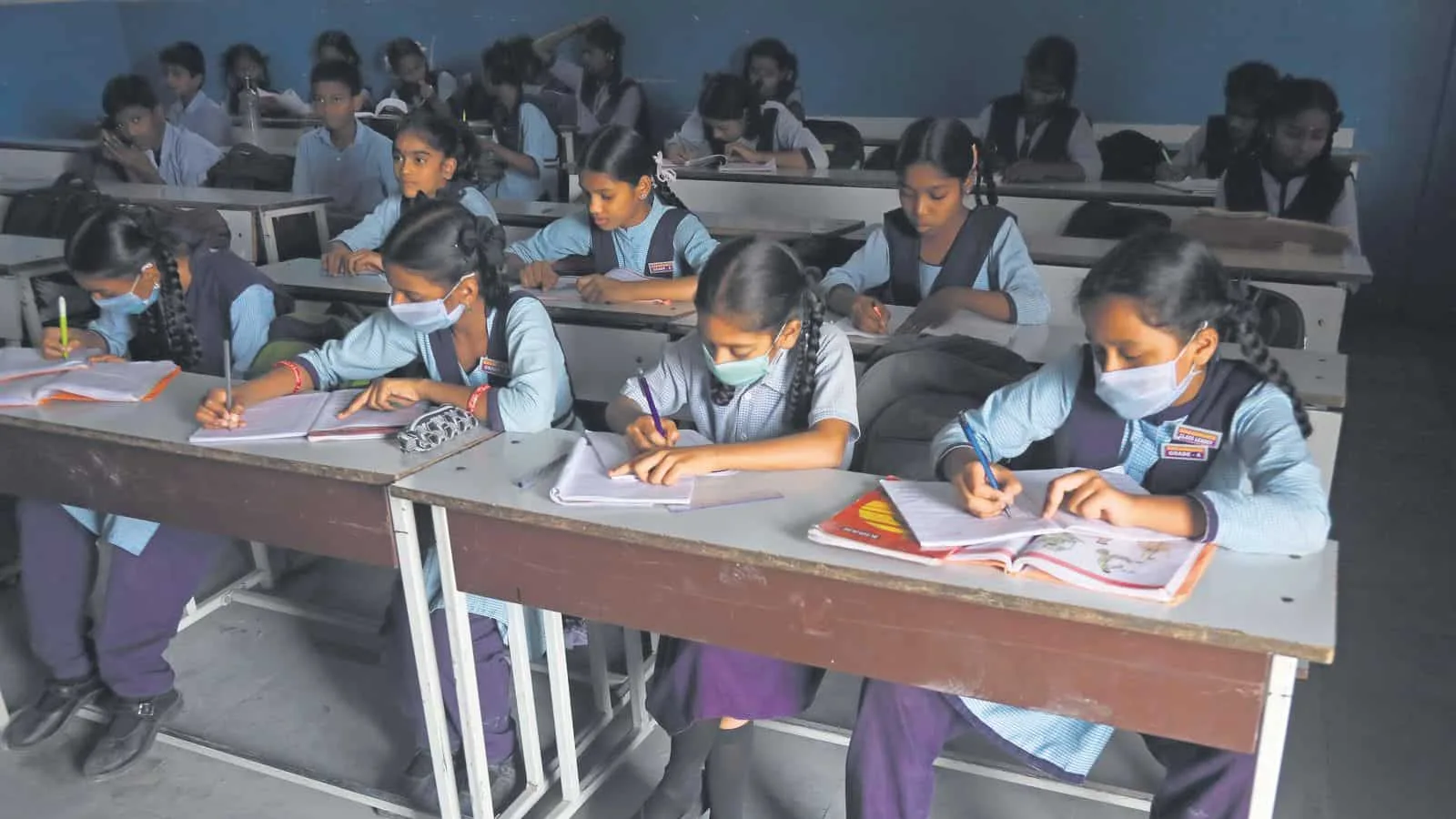Come cyclone or flood, the residents of this coastal village would pack their bags and shift to camps. That is all set to change within a decade due to the mangrove conservation efforts of village women under the banner of Paryavaran Sanrakshan Abhiyan Trust
By Rakhi Ghosh
Nalini Kandi (45) now understands the importance of the mangrove forest that protects her village, Jhadling, from cyclonic storms and floods. Recalling the days preceding the landfall of Cyclone Fani of 2019, she narrated, ‘The IMD [Indian Meteorological Department] issued a warning that Cyclone Fani would landfall near our village. We panicked, but packed basic and essential items, including important documents, certificates, money, ornaments and medicines, in an aluminum trunk and clothes in a bundle and headed to a government school.’
When the men of the village returned the next day, they found that the severity of the cyclone was less than expected in Jhadling and a few other adjacent villages. The cyclonic storm had made landfall at Balukhanda, 49 km from Jhadling. ‘We were told that the 1.5 km dense mangrove forest saved us from the severity of the storm,’ Nalini said.
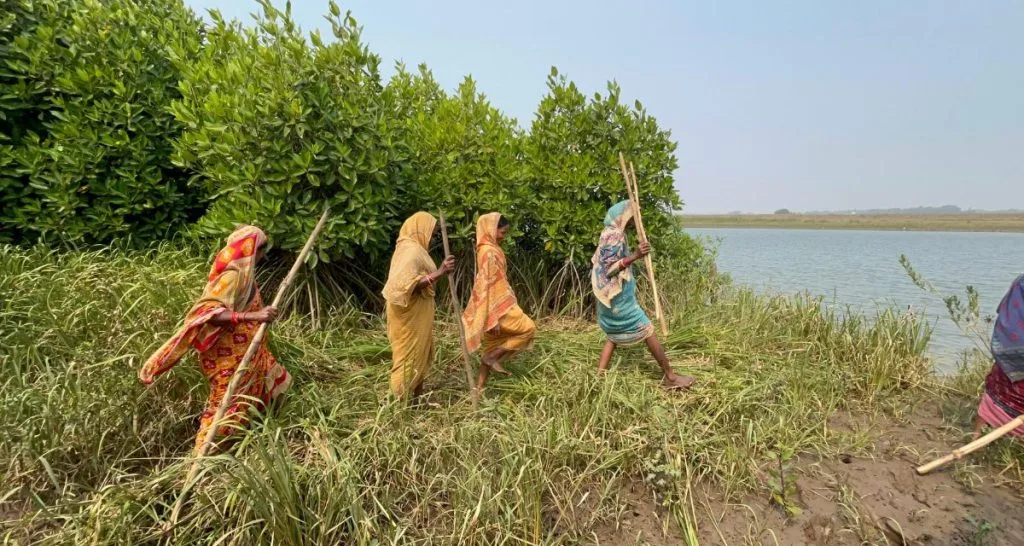
Mangroves are salt-tolerant trees and shrubs typically found in estuarine and intertidal regions. They grow in areas where freshwater and saltwater meet and where soil is marshy.
‘Since childhood, we have been experiencing cyclonic storms, of which the Super Cyclone of 1999, Phailin of 2013 and Fani of 2019 were the most devastating. When the administration issues a warning, we would rush to the school to protect ourselves. When we return, the village will mostly be submerged. Our agriculture fields would be devastated. We would stay in that waist-deep water for seven to 10 days until it fully recedes,’ said Mamina Kandi (39). In short, life comes to a standstill for the inhabitants of nearly 80 villages, including Jhadling, in the Astaranga block during cyclonic storms and their aftermath.
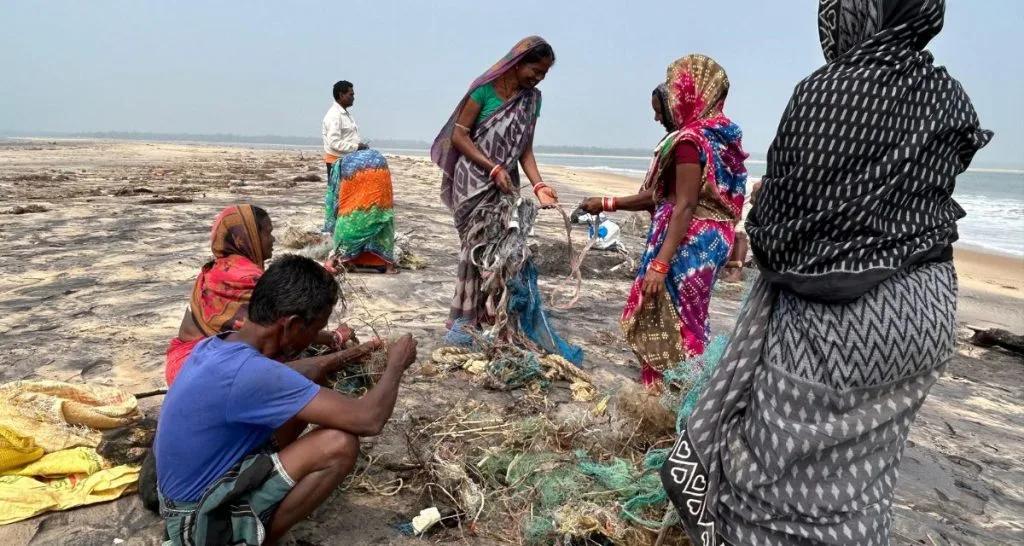
The villagers had not considered protecting mangroves to act as a shield against cyclonic storms until Soumya Ranjan Biswal, a marine turtle and mangrove conservationist from Astaranga block, sensitised them on the issue. ‘Though Odisha Paryavaran Sanrakshan Abhiyan Trust has been working on the Olive Ridley sea turtle conservation project for more than a decade, we realised that if we can protect the mangrove forest surrounding Jhadling panchayat, it would benefit the vulnerable community of this coastal village. We also thought of involving women to lead the conservation initiative,’ said Biswal, the founder of the trust.
‘While conserving Olive Ridleys at the Devi river mouth, I found that mangrove forests surrounding Astaranga block have been destroyed in many places. So, I, along with a few youths of my native Gundalba, a neighbouring village of Jhadling, started creating nursery beds for the plantation of mangrove saplings. We used to go early in the morning and return late in the evening. One day in 2023, I saw five women collecting firewood from the mangroves. I tried to convince them about the importance of mangrove forests and how it would be destroyed if they continuously collected wood.’
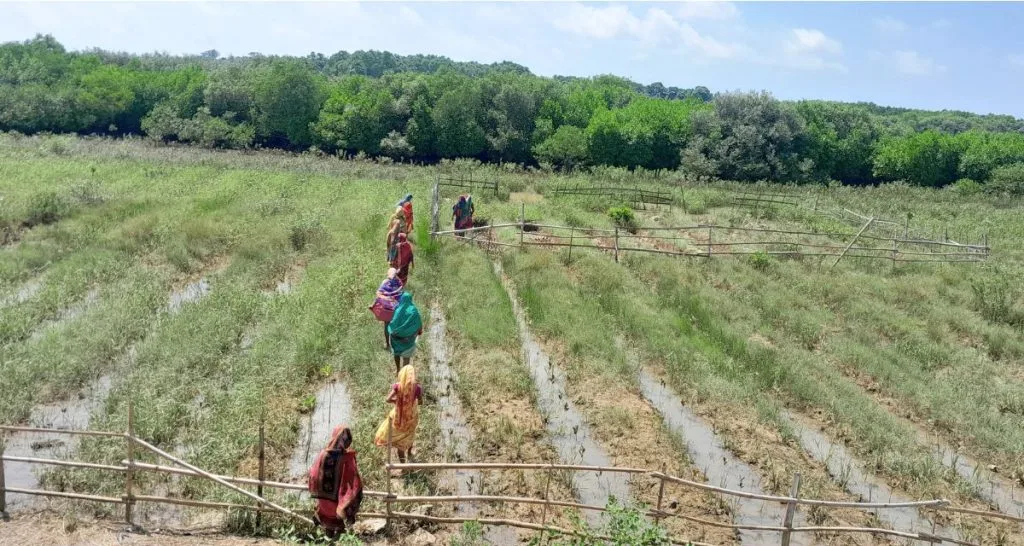
The good thing was that he managed to convince them, so they stopped collecting firewood from mangroves. In 2023, Biswal launched the Women for Mangroves Initiative to reverse the damage unknowingly caused to the larger mangrove ecosystem. The village women were initially reluctant to join, but he took them to his training centre in Astaranga, where he offered environmental training to schoolchildren and villagers and elaborated on the importance of mangrove forests and how they work as a shield against cyclonic storms and floods.
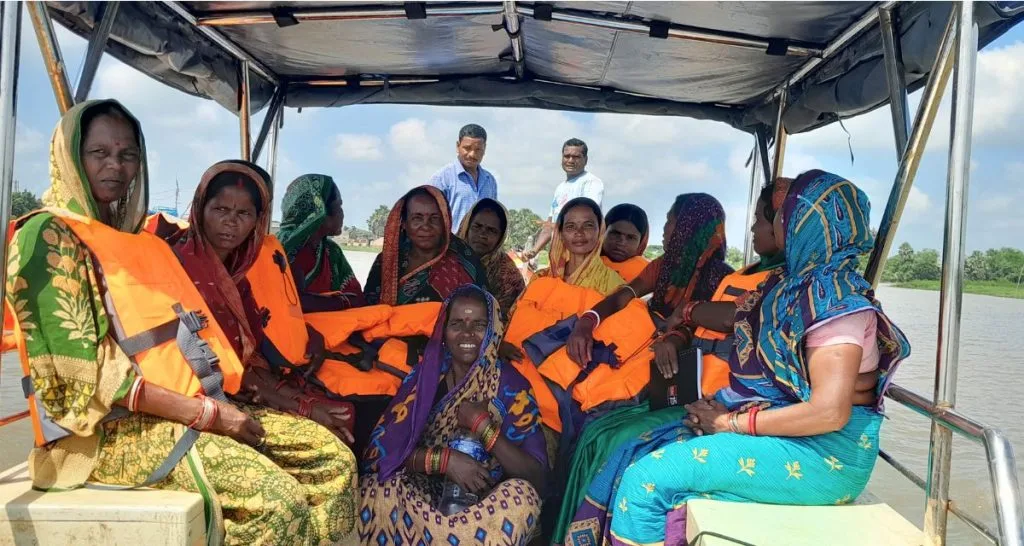
‘After attending the training, we were ready to join the initiative,’ said Nayana Kandi (49), now a member of the Women for Mangroves Initiative. Initially, five women joined the group and after finishing household chores every morning, they would go to the mangrove forest for conservation work.
‘As this work is not as easy as it sounds, we approached a few men in our village to join us,’ said Ranjulata Kandi (45), adding, ‘They ferry us in the boat and when we go inside the dense forest, they guide us. Sometimes there is fear of attacks from wild animals and snakes.’
The mangrove conservation project that started informally has grown with time. The number of participating women has increased to 25. Seven fishermen are also involved in the effort. In a span of two years, over 22,000 mangrove saplings have been planted. The participants collect seeds from the riverbank when water recedes during low tide and preserve them for germination. Subsequently, they sow the germinated seeds in fenced nursery beds. Men help them in this work.
The women are paid Rs 250 per day for the four-hour-long conservation effort they take up on three to four days of a week, mostly during low tide. Paryavaran Sanrakshan Abhiyan Trust pays them with the funding support from Billion Trees, an initiative run by Subroto Chatterjee; Jagrut Odisha, a social welfare organisation based in Cuttack; Govind Tripathy Smruti Parishad; philanthropists; and individual well-wishers. It has not received any government support yet.
Women members have indigenous knowledge in seed selection. They know which seed will grow in which type of soil. ‘We know that indigenous species rai, sinduka, kaliachua, bandari and keruan grow well in marshy fields. Now we take more interest in understanding what other varieties are available in our mangrove forests and where they will grow well,’ Nalini explains.
Kendrapada district, known for Bhitarkanika National Park, has the highest mangrove forest cover in Odisha. The India State of Forest Report 2023 reveals that the state has a mangrove cover of 259.06 sq km, of which Kendrapada has the highest cover of 212.69 sq km (81%), followed by Bhadrak (32.39 sq km), Jagatsinghpur (8.42 sq km), Balasore (4.82 sq km) and Puri (0.74 sq km).
In 2024, when Cyclone Dana was predicted to make landfall near Bhitarkanika National Park and Dhamra Port, people feared that it would destroy their villages. But the dense mangrove cover of Kendrapada helped minimise the impact.
Bikash Ranjan Dash, Chief Conservator of Forest (Wildlife), Odisha State Forest Department, told 101Reporters that mangrove forests act as a shield against cyclonic storms, but some people have constructed illegal gheris [encroachments] for prawn fishing in Kendrapada. ‘The department is taking action against these encroachments and has launched plantation drives with local support. It will provide livelihood options, especially to women.’
Before they launched conservation efforts, the women of Jhadling used to catch crabs from the mangroves and sell them to local traders. Each woman used to collect 18 to 20 crabs in three to four days, which would bring in Rs 300 to 500. They also collected firewood for cooking from the mangroves.
‘Our husbands work in agricultural fields and sometimes go to nearby towns to work as labourers. To financially support our families, we used to catch crabs… The work was sometimes dangerous. Chances of getting a crab bite was high if one was a little careless… No other work was available in our village, so we continued with it until the conservation project created new opportunities for us,’ said Sulochana Kandi (49).
‘We are not catching crabs anymore; rather, we are devoting our time to conservation work,’ beams Nalini. The wages they receive are sufficient to support the family financially. They source firewood from the neighbourhood, instead of depending on the mangrove forests for it. ‘We engage in plantation work to protect the villages along the coastal areas of Astaranga from cyclonic storms in the future. Our children will not have to run when there is a cyclone warning,’ hoped Mamina.
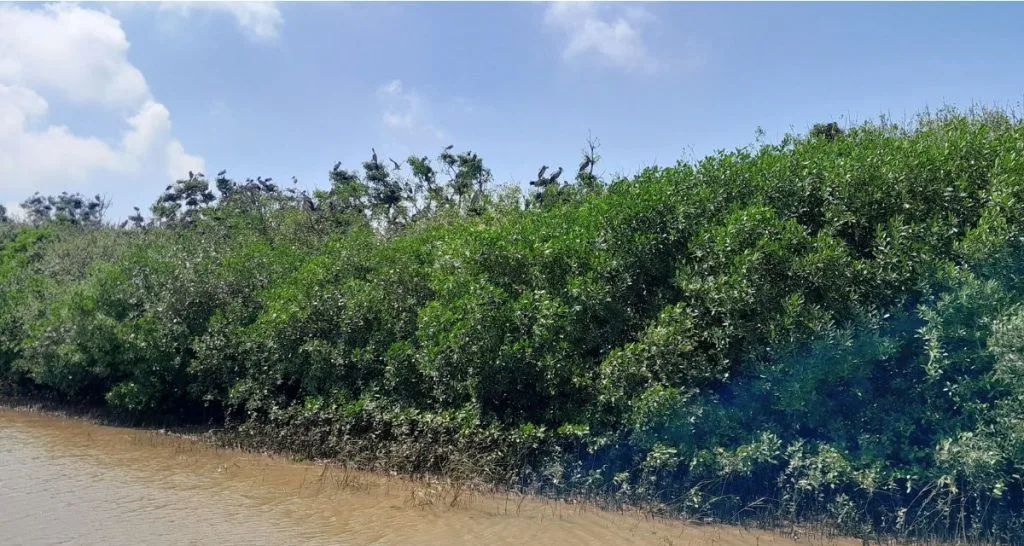
When asked about the support from the forest department, Biswal said, ‘They appreciate and encourage our mangroves initiative.’ No official from the Puri Forest Division agreed to speak on the women’s efforts in Jhadling, maintaining that only the principal chief conservator of forests or any other senior officer from the Bhubaneswar office should speak.
The outcome of this conservation work is likely to be visible in another 10 years, as mangrove plants take three to five years to grow.
Rakhi Ghosh is a freelance journalist and a member of 101Reporters, a pan-India network of grassroots reporters.
About the author(s)
101Reporters is a pan-India network of grassroots reporters that brings out unheard stories from the hinterland.
